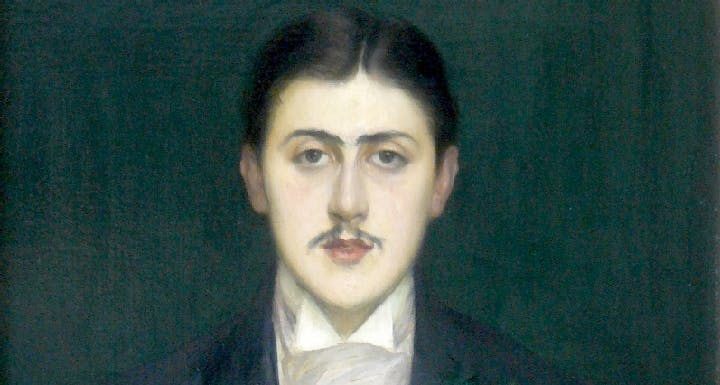Winter 2008
An Artist’s Intuition
– Anthony Aveni
A young writer's book about the scientific clairvoyance of artists every bit as insightful as the ideas of his subjects.
“There are no qualitieswhich are so occult . . . that [their] reason cannot be given” by the principles of the mechanical philosophy. So wrote French philosopher René Descartes. Three centuries later, his dictum crumbled in the quake of a scientific revolution. Max Planck dissolved the billiard balls thought to make up the atom into probability smears whose positions and orbits could never to be pinpointed with certainty. Einstein changed the meaning of the words “here” and “now” by warping deeply ingrained concepts of space and time. Darwin hurled the monkey wrench of long-term randomness into the teleological view of life. And Freud violated the limits of our cognitive experience by asserting that conscious thought is but the tip of the human mind.
But this early-20th-century revolution was not strictly an ivory tower affair, argues Jonah Lehrer, whose collection of pithy essays shows how eight artists, writers, poets, musicians—even a French chef—anticipated science’s discoveries about the workings of the human brain. Those earlier discoveries, richer if less precise, broader if less explicit than those that scientists subsequently homed in on, seem more relevant to life’s everyday meaning.
Take Marcel Proust (1871–1922), a devout disciple of metaphysician Henri Bergson’s anti-mechanistic view of the universe. Lehrer explores the sentimental aspects of our senses of taste and smell via the French novelist’s celebrated encounter with the madeleine and what he wrote about the vivid memories that accompanied successive visitations with that cookie. Lehrer shows how Proustian prose about deceptive memories reflects the “molecular truth” that every memory depends on subtle neuronal connections inhabited by prions, curious proteins that, like our larger selves, are unpredictable and unstable.
Musical dissonance was born on the eve of the Russian Revolution, when Igor Stravinsky’s Rite of Spring premiered and sent the audience into a screaming riot. Like Jackson Pollock’s fractal pourings, the genius of Stravinsky (1882–1971) lay in the controlled violation of form. There was pattern—the audience just wasn’t ready to apprehend it. Then why today do we flock to the concert hall to listen to it? Neuroscience’s belated answer lies in the brain’s corticofugal network, Lehrer explains. Noises repeatedly heard are memorized. Feedback from higher regions of the brain reorganize the auditory cortex so that hidden patterns are easier to recognize in the future. You literally change with the music.
Lehrer’s account of Auguste Escoffier’s (1846–1935) insight into the sense of taste, as it is understood today, transports us from the complexity of a good veal stock to the mysterious essence of umami, the Japanese “sixth sense” of deliciousness. Lehrer dissects the mystery by tracing the pathway from tongue receptor to DNA. (His service in the kitchen of Le Cirque and in the lab of a Nobel Prize–winning neuroscientist serves him well in this cross-disciplinary endeavor.)
Young Lehrer’s book (he is 26!) is a welcome antidote to science trade texts that bash the humanities and debunk worldviews that fail to incorporate scientific method and theory. His final chapter challenges attempts by icons E. O. Wilson and Steven Pinker to explain science to the public. Such works, he contends, are largely uninformed efforts to reduce the humanistic disciplines to mere symptoms of science. But the postmodernist retort, which reckons science as just another set of descriptions of reality amidst an infinite sea of equally valid ways of knowing, serves no better purpose, Lehrer says.
Having taught and written about science for 45 years, I think I know why public understanding of our sphere is so deplorable. Too few of us make any attempt to connect our ideas and subject matter to the rest of human experience and inquiry. Lehrer makes no claim to having found the secret bridge that might link the sciences and humanities, but he does suggest that my students might benefit by paying more attention to what Virginia Woolf penned about the emergent self and what Walt Whitman wrote about the body electric. He’s right! We will never reduce feeling to physics, nor consciousness to chemistry—not so long as the voice of the artist remains alive.
* * *
Reviewed: Proust was a Neuroscientist. By Jonah Lehrer. Houghton Mifflin. 242 pp.
Image courtesy of Wikimedia Commons
